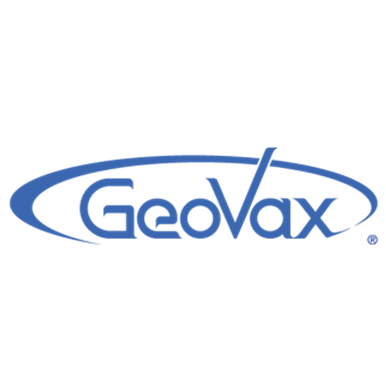Research News and Market Data on GOVX
Highlights Broad National Support for Domestic Vaccine Resilience and Role of MVA Platform in Public Health Preparedness
ATLANTA, GA – May 29, 2025 – GeoVax Labs, Inc. (Nasdaq: GOVX), a clinical-stage biotechnology company developing multi-antigen vaccines and immunotherapies, voiced strong support for the newly announced bipartisan initiative by U.S. Senators Joni Ernst (R-IA) and Lisa Blunt Rochester (D-DE) to onshore the manufacturing of critical pharmaceutical supplies. The Critical Infrastructure Manufacturing Feasibility Act seeks to reduce reliance on foreign sources for key medical products—directly aligning with GeoVax’s mission to rebuild U.S.-based vaccine manufacturing and strengthen national preparedness.
“We are seeing a unified, national groundswell—from Congress, the White House, HHS, FDA, BARDA, and commissions like NSCEB—calling for the onshoring of America’s vaccine manufacturing base,” said David Dodd, Chairman and CEO of GeoVax. “GeoVax is purpose-built to answer that call, with a clinically validated MVA platform, a domestic manufacturing strategy, and a focus on pandemic responsiveness and protection of the immunocompromised.”
Rebuilding U.S. Biomanufacturing Through Coordinated Federal Action
The Senate initiative complements a cascade of government actions to bring the manufacturing of essential medical countermeasures—including vaccines—back to U.S. soil including:
- The White House Executive Order on pharmaceutical independence.
- The HHS-ASPR-DARPA EQUIP-A-Pharma initiative.
- BARDA’s Rapid Response Partnership Vehicle (RRPV), which selected GeoVax’s MVA manufacturing proposal for award (pending funding).
- The NSCEB’s call for $15 billion in U.S.-owned biotech infrastructure.
These actions reflect growing bipartisan recognition that national health security depends on resilient, scalable domestic vaccine capacity.
MVA Technology: Protecting the Immunocompromised with Durable, Multi-Antigen Vaccines
GeoVax’s MVA platform supports a pipeline of multi-antigen vaccines, including GEO-CM04S1 (COVID-19), primarily targeted to address the current unmet needs inducing broad T-cell and antibody responses among immunocompromised individuals, overcoming the limitations of single-antigen vaccines.
GeoVax’s MVA vaccines align with FDA and HHS goals to advance diversified, multi-antigenic strategies that provide broader, longer-lasting protection across high-risk groups.
Enabling U.S. Biomanufacturing Through Equip-A and BARDA RRPV: A Roadmap to Rapid, U.S.-Based Vaccine Production
GeoVax’s progressing advanced MVA manufacturing process is anticipated to eliminate the need for pathogen-free eggs and leverage a continuous avian cell line system, directly supporting the objectives of the federal government’s EQUIP-A-Pharma initiative. This HHS-ASPR-DARPA program aims to create agile, point-of-care pharmaceutical production capabilities using modular, AI-driven platforms.
Additionally, GeoVax’s proposal—“Innovation in Clinical Manufacturing of MVA-Vectored COVID-19 Vaccines”—was selected by BARDA’s Rapid Response Partnership Vehicle (RRPV), pending funding availability. The program is designed to accelerate the scale-up of advanced U.S.-based MVA vaccine manufacturing. The proposal is designed to:
- Replace legacy egg-based systems with a continuous avian cell line (AGE1);
- Enable high-volume, GMP-compliant vaccine output deployable within months—not years;
- Support rapid pandemic response and reduce foreign supply chain dependencies;
- Lay the foundation for broader applications across multiple infectious disease targets.
If funded, this effort is expected to create a scalable, resilient domestic manufacturing platform essential for the rapid deployment of MVA-based vaccines like GEO-CM04S1 (COVID-19) and GEO-MVA (Mpox/smallpox).
Platform Alignment with National Priorities
GeoVax’s MVA-based vaccines embody the shift in U.S. public health strategy away from single-antigen platforms and toward multi-antigen, durable, and safe alternatives. These vaccines are specifically engineered to meet the needs of high-risk populations—including the 40+ million immunocompromised Americans who may not respond effectively to mRNA and other vaccines that focus primarily on inducing antibody immunity.
GeoVax’s U.S.-controlled MVA platform addresses key government objectives:
- Vaccine arsenal diversification (beyond mRNA and other single-antigen platforms)
- Domestic manufacturing readiness
- Transparency and public trust
- Simplified global access and affordability
- National security through supply chain independence
- Products ready for rapid clinical and regulatory advancement
- Vaccines built for strategic stockpiling and broad immunization
Call for Continued Bipartisan Momentum
“With renewed bipartisan focus on U.S. medical independence, there is no better time to invest in American-homegrown vaccine innovation,” added Dodd. “We urge lawmakers and federal agencies to continue supporting domestic capacity, biodefense readiness, and equitable access to advanced medical countermeasures to protect both our national security and our most vulnerable populations.”
About GeoVax
GeoVax Labs, Inc. is a clinical-stage biotechnology company developing novel vaccines against infectious diseases and therapies for solid tumor cancers. The Company’s lead clinical program is GEO-CM04S1, a next-generation COVID-19 vaccine currently in three Phase 2 clinical trials, being evaluated as (1) a primary vaccine for immunocompromised patients such as those suffering from hematologic cancers and other patient populations for whom the current authorized COVID-19 vaccines are insufficient, (2) a booster vaccine in patients with chronic lymphocytic leukemia (CLL) and (3) a more robust, durable COVID-19 booster among healthy patients who previously received the mRNA vaccines. In oncology the lead clinical program is evaluating a novel oncolytic solid tumor gene-directed therapy, Gedeptin®, having recently completed a multicenter Phase 1/2 clinical trial for advanced head and neck cancers. The Company is also developing GEO-MVA, a vaccine targeting Mpox and smallpox. GeoVax has a strong IP portfolio in support of its technologies and product candidates, holding worldwide rights for its technologies and products. For more information about the current status of our clinical trials and other updates, visit our website: www.geovax.com.
Forward-Looking Statements
This release contains forward-looking statements regarding GeoVax’s business plans. The words “believe,” “look forward to,” “may,” “estimate,” “continue,” “anticipate,” “intend,” “should,” “plan,” “could,” “target,” “potential,” “is likely,” “will,” “expect” and similar expressions, as they relate to us, are intended to identify forward-looking statements. We have based these forward-looking statements largely on our current expectations and projections about future events and financial trends that we believe may affect our financial condition, results of operations, business strategy and financial needs. Actual results may differ materially from those included in these statements due to a variety of factors, including whether: GeoVax is able to obtain acceptable results from ongoing or future clinical trials of its investigational products, GeoVax’s immuno-oncology products and preventative vaccines can provoke the desired responses, and those products or vaccines can be used effectively, GeoVax’s viral vector technology adequately amplifies immune responses to cancer antigens, GeoVax can develop and manufacture its immuno-oncology products and preventative vaccines with the desired characteristics in a timely manner, GeoVax’s immuno-oncology products and preventative vaccines will be safe for human use, GeoVax’s vaccines will effectively prevent targeted infections in humans, GeoVax’s immuno-oncology products and preventative vaccines will receive regulatory approvals necessary to be licensed and marketed, GeoVax raises required capital to complete development, there is development of competitive products that may be more effective or easier to use than GeoVax’s products, GeoVax will be able to enter into favorable manufacturing and distribution agreements, and other factors, over which GeoVax has no control.
Further information on our risk factors is contained in our periodic reports on Form 10-Q and Form 10-K that we have filed and will file with the SEC. Any forward-looking statement made by us herein speaks only as of the date on which it is made. Factors or events that could cause our actual results to differ may emerge from time to time, and it is not possible for us to predict all of them. We undertake no obligation to publicly update any forward-looking statement, whether as a result of new information, future developments or otherwise, except as may be required by law.
Company Contact:
info@geovax.com
678-384-7220
Investor Relations Contact:
geovax@precisionaq.com
212-698-8696
















